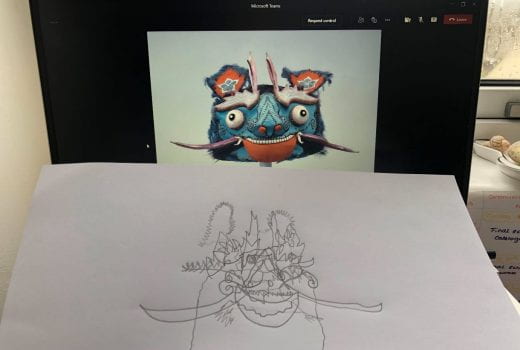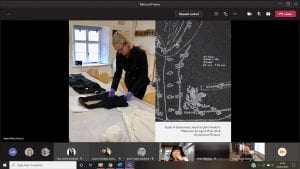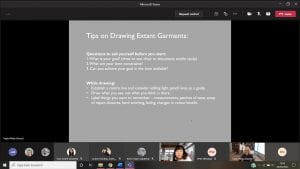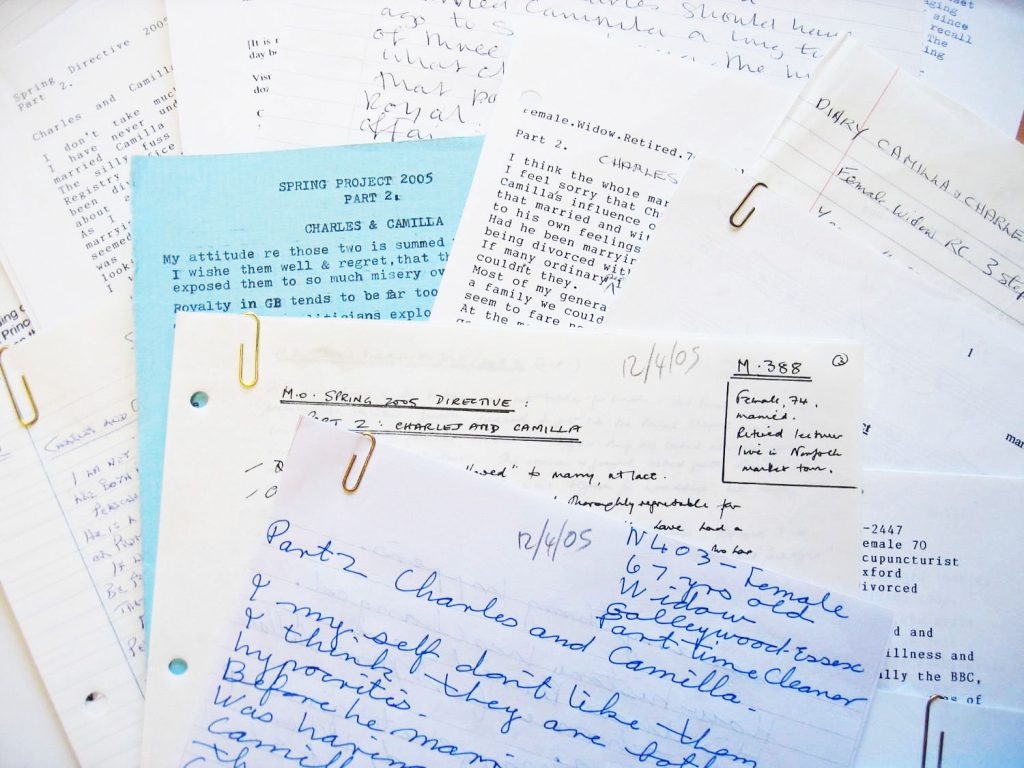Second year BA (Hons) Fashion and Design History students Daphne Chatterley, Amy Garrod, Amy Roberts, Jenny Stirling and Maggie Swan have curated a showcase on WWII Women’s Workwear at Mithras House.
PRESS RELEASE
Issued 11/2024
An Ancestor to the Office Siren: Women’s Workwear 1940-45
3 December 2024 – April 2025
Mithras House
Launching on 3 December 2024, ‘An Ancestor to the Office Siren: Women’s Workwear 1940-45’ will be a short exhibition exploring the suits worn by women during a decade pivotal to society’s view of the working woman, on a backdrop of conflict and rationing of resources.
Eye-catching visual stimuli such as the dreamlike advertising fashion plates of clothing manufacturer Harella accompanies an ensemble of both authentic and replica/imitation 1940s garments to encapsulate the silhouette and lines of the popular style for women of the time, while period newspaper columns from British fashion journalist Alison Settle (Vogue editor 1929-36) illustrate the experience of dressing for the average woman in Britain, amidst rationing schemes in a conflict-torn political landscape.
The exhibition offers insight into the silhouettes of the era, with their accentuated shoulder and hip lines imitating masculinities, as women began to occupy previously male-exclusive workplaces, representing an assimilation through dress – but an empowering form of dress nonetheless.
Visitors will also be met with information on the rationing coupon scheme utilised during the Second World War, and gain an understanding of the value of coupons to garments similar to those displayed, while Settle’s writings describe the various make-do home methods of repurposing and recycling garments (often men’s) in a time of making little go a long way.
“In a few words, the war years in the U.K. meant coupon rationing, shortages, make-do and mend, and what came to be officially to be known as ‘Utility Clothing’.”
– Alison Settle
Two and three-dimensional objects loaned from the university’s Teaching Collection and Design Archives allow this exhibition to materialise and investigate the self-styling practices of the 1940s woman through dress in a time of austerity and political uncertainty while navigating the workplace, encouraging interest and engagement in a younger audience familiarised with the current micro-trend of the ‘office siren’, a seductive and hyper feminine character in the corporate style; presenting a predecessor to this in an era where imitating masculinities inspired major trends.
For high resolution images see below.
Further Information
Find us on Instagram by searching for the handle or scanning the code below, and leave feedback on the form accessible in the account bio.
Notes to Editors
Curated and presented by Daphne Chatterley, Amy Garrod, Amy Roberts, Jenny Stirling and Maggie Swan, students of BA Hons Fashion & Design History.
As a curatorial team we prioritise providing both visual and textual stimuli for visitors to enable fulfilling engagement with historical subject matter, while finding relevant links to style and popular culture today, such as internet trends and vintage revival. We aspire to bring women’s stories to the forefront of our historical studies as a group of queer and feminist students, challenging an art historical canon dominated by male figures.
This exhibition can be found in Mithras House, home to social studies at the University of Brighton, and the Teaching Collection founded by Professor Lou Taylor.
Mithras House
Lewes Road
Moulsecoomb, Brighton
BN2 4QX
Acknowledgements
With special thanks to the advisory assistance from Suzanne Rowland and Nicola Miles, help with the loan of objects from Sue, Sirpa and Jen at the University of Brighton Design Archives, and technical assistance of Arden Mccutcheon.

Fig. 1, Daphne Chatterley, An Ancestor to the Office Siren Exhibition Poster, Nov 2024.
image on poster: Artist unknown, Fashion magazine advert, c.1940s, UK, via The Advertising Archives, Bridgeman Education.

Fig. 2: View from the “An Ancestor of the Office Siren: Women’s Workwear 1940-1945” Exhibition, Mithras House, University of Brighton, Brighton. Personal photograph by Amy Garrod. 3 Dec 2024.












